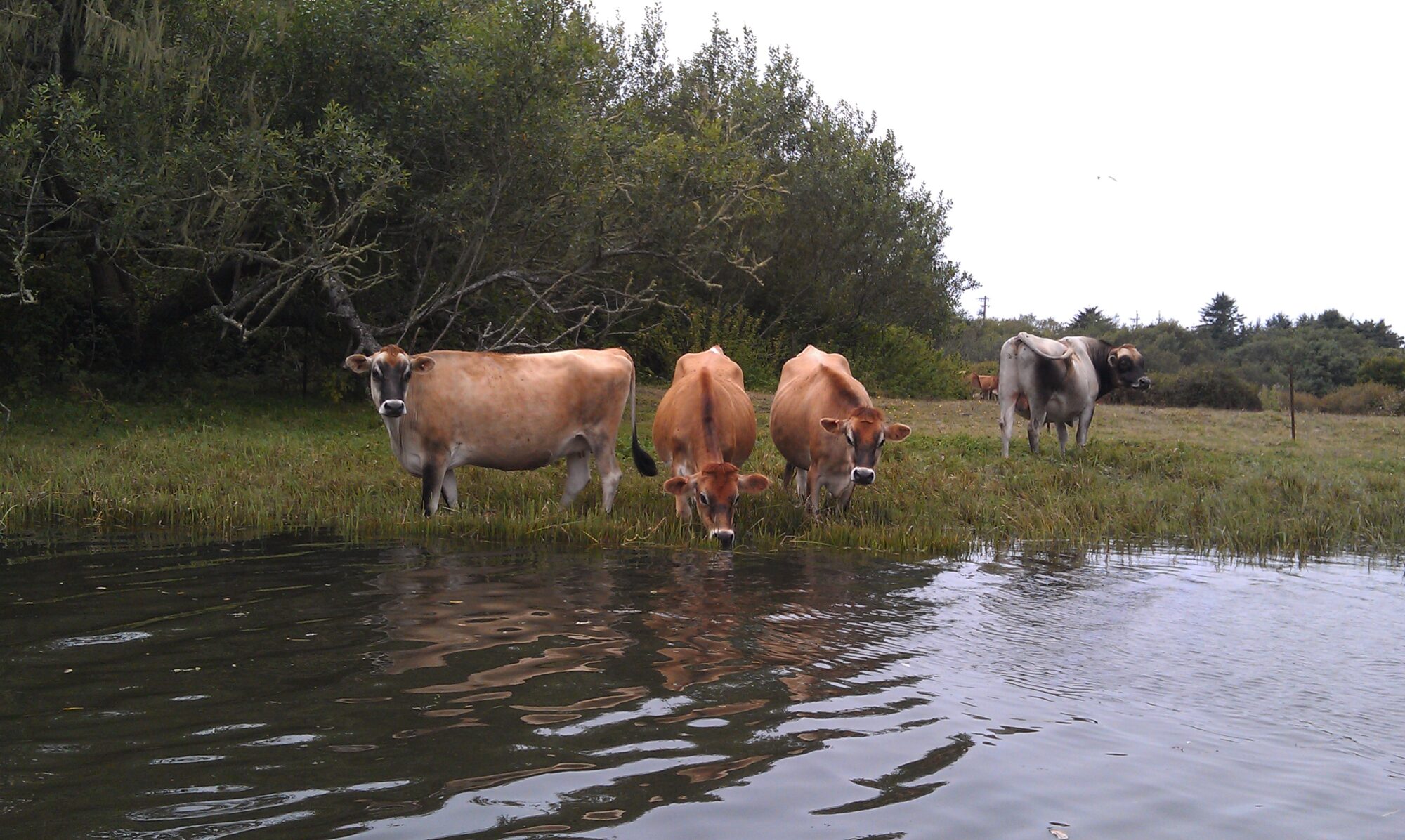
In California, grazing is a clean water nightmare. Poorly managed cattle operations damage vegetation along waterfronts, destabilizing riverbanks and increasing the amount of sediment in the water. Even worse, cow manure contaminates rivers and streams, polluting our waterways with a variety of harmful bacterial pathogens. As advocates for clean water across the state, our goal has been simple: require better grazing management so our waters don’t suffer. However, the California Water Boards, the government agencies responsible for protecting California’s clean waters, have allowed grazing to be legally “free range,” polluting California’s sensitive waterways.
When it comes to grazing, California’s clean water law, the Porter-Cologne Act, is surprisingly straightforward. Because there is no single point of pollution, like a pipe spewing chemicals into a river, grazing is classified as “non-point source pollution.” For these non-point sources of pollution, the Porter-Cologne Act requires the Water Boards do three things: (1) identify pollution controls for an industry, (2) legally incentivize that industry to follow those practices, and (3) enforce those controls through permits. However, as of 2022, the State Water Board has failed to even complete the first requirement.
The closest the Board came was in 2014 when it started to put together its Grazing Regulatory Action Program, or GRAP. This program would have reached out to ranchers across the state to determine what general, statewide pollution controls were available to the grazing industry. Unfortunately, the State Water Board ended GRAP in 2015, opting instead to take a regional approach to grazing, delegating this duty to the nine Regional Water Boards.
As a result, instead of a unified statewide approach to grazing, each of the nine Regional Boards have developed their own methods for controlling grazing pollution. However, not much has been done at the regional levels, and some of the Regional Boards are still looking to the State Water Board for guidance.
The State Water Board needs to develop and implement a baseline set of pollution controls and monitoring requirements for grazing across the state. This baseline will help the Regional Boards approach grazing as a unified front, and regional conditions can be added on top of these statewide pollution controls where needed. For example, a study done at the University of California Davis looked at over 1 million acres of rangelands across the central and north east California to determine if there were simple and effective ways to protect waterways. That study found that minor efforts to keep cattle away from waterways could improve riparian health by 53%. The State Water Board could require ranchers to keep cattle out of waterways, while the Regional Boards could determine the best approach – such as salt licks, fencing, or herding – to best achieve that goal in their region.
To ensure that California’s waterways are fishable, swimmable, and drinkable, it is imperative that we control how much pollution goes into our rivers and streams. If let unmanaged, grazing will lead to increased sedimentation and pathogens in our waters. The State Water Board should develop statewide grazing minimum pollution controls and monitoring requirements to protect our important natural resources.
Stay informed of California Coastkeeper Alliance’s work to protect our watersheds – now and for generations to come – by subscribing to our newsletter, becoming a lifetime member, or following us on social media: @CA_Waterkeepers.
Staff Attorney Cody Phillips advocates for statewide policies that protect water quality and access to clean water throughout California.



